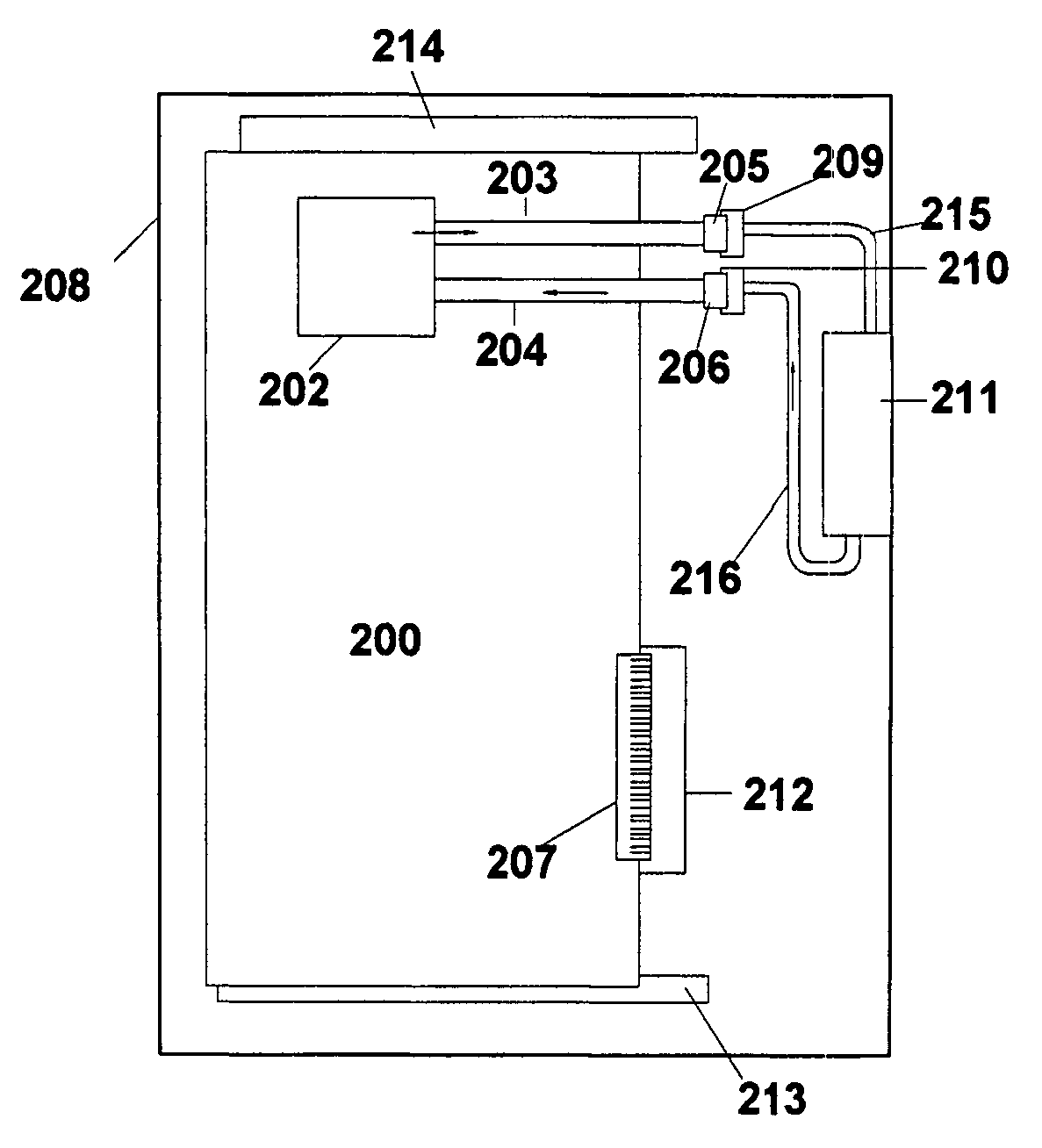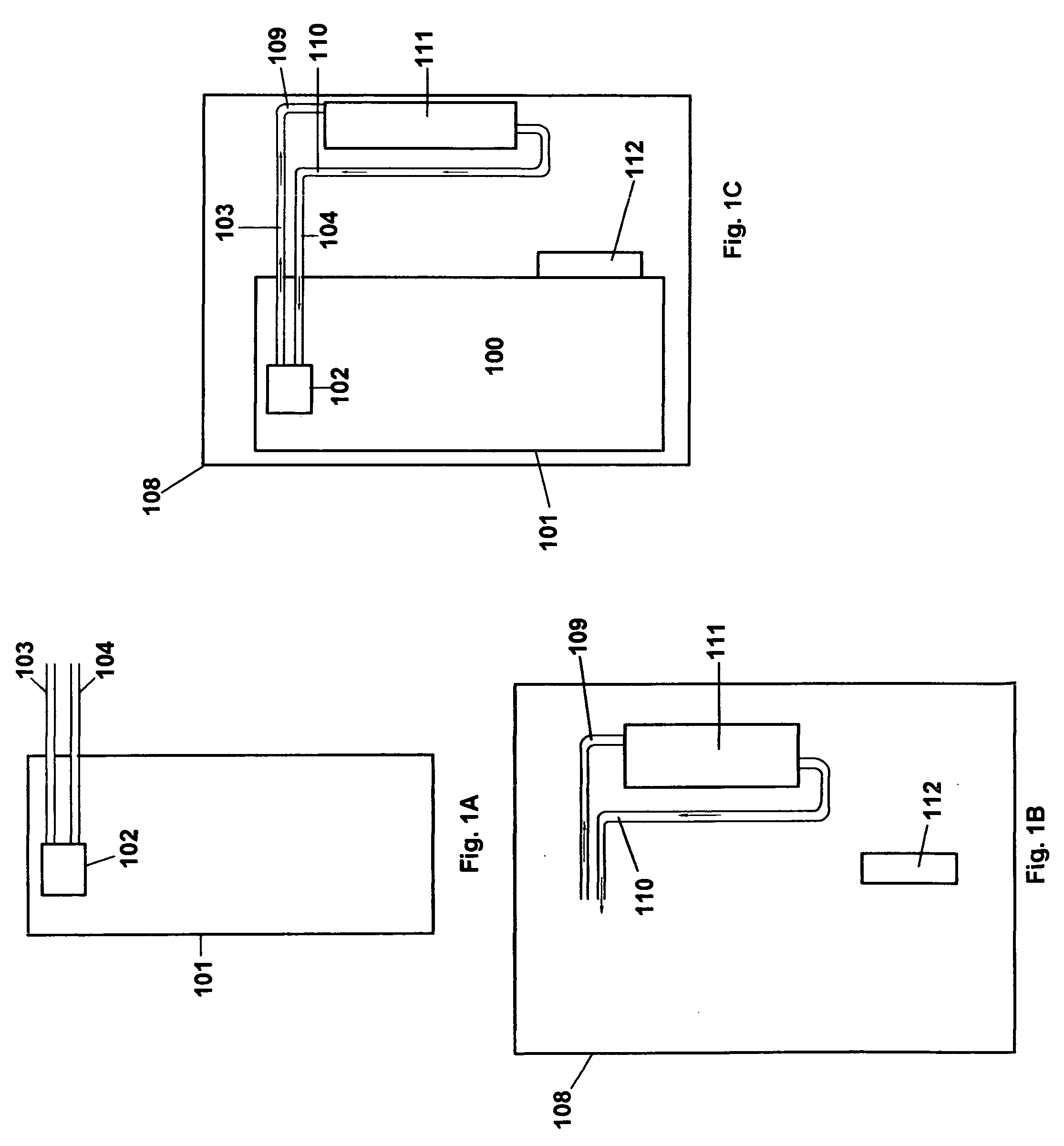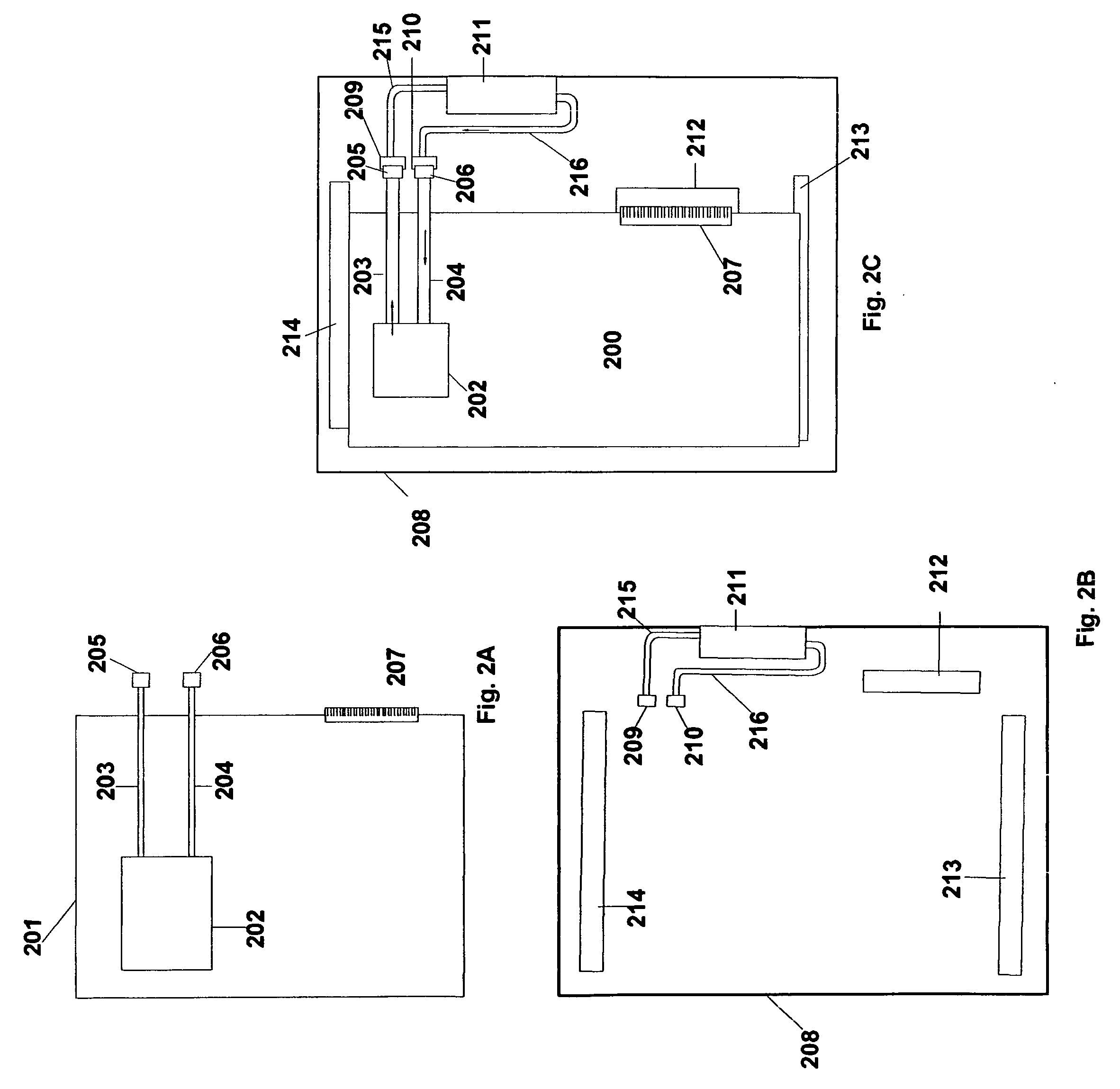Cooling system
a cooling system and cooling system technology, applied in the field of cooling systems, can solve the problems of system malfunction or slowdown, the size and weight of air-cooled solutions become more problematic, and traditional cooling approaches such as heat sinks and heat pipes cannot practically keep up with the growing heat problem, so as to minimize the amount of coolant spilled or leaked.
- Summary
- Abstract
- Description
- Claims
- Application Information
AI Technical Summary
Benefits of technology
Problems solved by technology
Method used
Image
Examples
Embodiment Construction
[0042] Whilst the making and using of various embodiments of the present invention are discussed in detail below, it should be appreciated that the present invention provides many applicable inventive concepts, which can be embodied in a wide variety of specific contexts. The specific embodiments discussed herein are merely illustrative of specific ways to make and use the invention and do not limit the scope of the invention.
[0043] It should be understood that the principles and applications disclosed herein can be applied in a wide range of data processing systems, telecommunication systems and other systems such as electrical and electronic systems. In the present invention, heat produced by a heat generating component, such as, but not limited to, a microprocessor in a data processing system, is transferred to a coolant in a heat transfer unit and dissipated in the cooling system. Liquid cooling solves performance and reliability problems associated with heating of various heat...
PUM
 Login to View More
Login to View More Abstract
Description
Claims
Application Information
 Login to View More
Login to View More - R&D
- Intellectual Property
- Life Sciences
- Materials
- Tech Scout
- Unparalleled Data Quality
- Higher Quality Content
- 60% Fewer Hallucinations
Browse by: Latest US Patents, China's latest patents, Technical Efficacy Thesaurus, Application Domain, Technology Topic, Popular Technical Reports.
© 2025 PatSnap. All rights reserved.Legal|Privacy policy|Modern Slavery Act Transparency Statement|Sitemap|About US| Contact US: help@patsnap.com



